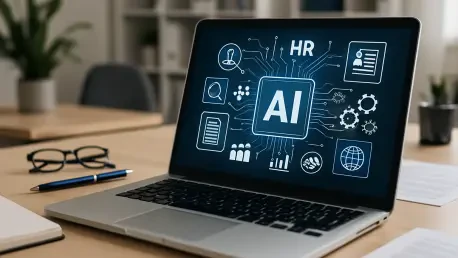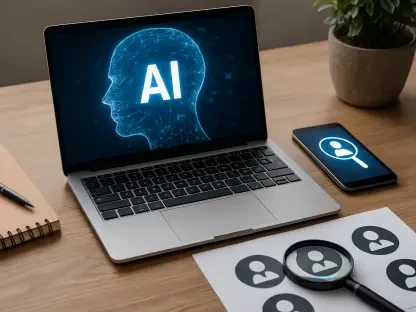No, AI isn’t coming to take your job. But make no mistake: organizations that let AI sit on the sidelines while competitors weave it into their people strategy will soon find themselves outpaced. The real inevitability isn’t a machine-led takeover of HR; it’s that HR teams who adopt AI thoughtfully will outcompete, out-hire, and out-engage those that don’t.
The challenge for HR leaders is to treat AI not as an end, but as a force multiplier. That requires a shift in mindset – from viewing AI as a tool for efficiency alone to treating it as a strategic capability that augments judgment, preserves human dignity, and scales empathy at enterprise speed. Read on to learn how your organization can reach these heights.
The New Reality
AI is no longer an experimental sidebar. From intelligent talent marketplaces to predictive attrition models, generative assistants to automated candidate screening, AI has become embedded across the employee lifecycle. For HR, this means routine tasks will be automated, insight generation will be accelerated, and decision-making will be reframed by data-driven signals. The upside is clear: faster hiring cycles, better workforce planning, and more personalized employee experiences. The downside is real, too: automation can entrench bias, erode trust, and create opaque decisions if left unchecked.
Why HR Must Move First
HR sits at the intersection of people, policy, and performance. That unique vantage point makes the function the natural steward of responsible AI in the workplace. Organizations that delay risk losing control over three critical domains:
Talent advantage. Companies that utilize AI to surface skills, map internal mobility, and design highly relevant learning paths will be more efficient at redeploying talent as roles evolve.
Experience advantage. Personalized career conversations, AI-assisted coaching, and tailored wellbeing interventions create a workplace that feels human because it feels like a place where people are truly known.
Operational advantage. Automated onboarding, intelligent HR service desks, and programmatic compliance reduce friction, free HR to focus on strategic initiatives, and shrink time-to-value.
But advantage becomes liability if HR doesn’t couple capability with governance. That’s why strategy and safeguards must be designed in tandem.
Ethics, Trust, and Practical Risk
Rolling out AI in HR without guardrails is a risk multiplier. Algorithms trained on historical hiring data can inherit past discrimination. Models that surface people analytics without context can feel intrusive. Even well-meaning automation can yield perplexing outcomes when decisions lack transparency and explainability.
To build trust, HR must insist on transparency, auditability, and recourse. That means documenting data sources, validating model performance across demographic segments, and providing employees with clear explanations and appeal routes for automated decisions. It also means respecting privacy: anonymize where possible, limit data retention, and govern access tightly.
A pragmatic governance framework strikes a balance between innovation and protection. Start with a risk matrix that classifies AI use cases by impact – low (chatbots), medium (candidate shortlisting), high (compensation and promotion recommendations) – and apply proportionate controls. Embed independent audits and external reviews, so models are continuously checked against changing workforce dynamics.
The HR AI Playbook
Start with strategy, not tech. Define the business outcomes you want – such as reduced time to hire, improved retention, and smarter succession planning – and let those goals dictate your AI investments.
Clean, governed data is non-negotiable. Poor analytics often stem from poor data. Invest in a single source of truth for people data, standardize taxonomies for skills and roles, and enact data quality controls.
Build multidisciplinary teams. Combine HR specialists, data scientists, legal counsel, and employee representatives. Diversity of perspective accelerates the development of safer, more usable solutions.
Prioritize explainability and human-in-the-loop design. Wherever decisions materially affect careers, keep a human reviewer and require model explanations that non-technical stakeholders can understand.
Upskill your people ops. HR professionals must learn to interpret model outputs, challenge recommendations, and translate insights into humane interventions. Offer practical training, not just awareness workshops.
Pilot, measure, iterate. Start with contained pilots, measure impact against clear KPIs, and widen adoption only after demonstrating value and safety.
Vendor diligence matters. Scrutinize vendor training data, bias mitigation practices, and version-control procedures. Demand transparency on model updates and SLAs for support and incident response.
Communicate relentlessly. Employees should hear why AI is being used, what data is involved, and how decisions are made. Transparency reduces fear and increases adoption.
Align incentives. Tie leadership metrics to long-term health – employee engagement, retention, growth – not just short-term efficiency gains.
Prepare for regulation. Labor, privacy, and discrimination laws are catching up to AI. Anticipate obligations around automated decision-making.
Measuring Success and Scaling Responsibly
Measurement separates rhetoric from delivery. For each AI initiative, define no more than three leading KPIs and two lagging KPIs. Example leading metrics include time to hire, first-contact resolution, and internal mobility fill rate; lagging metrics might be voluntary turnover among critical roles and engagement scores for impacted populations. Pair quantitative measures with qualitative feedback loops – pulse surveys, focus groups, and case reviews – that reveal how people experience AI interventions.
Scale only with evidence. When a pilot achieves measurable improvements and meets fairness thresholds in audits, formalize the policy to scale. Maintain a registry of active AI systems, owners, and risk ratings so leaders and employees can see what’s in production and why.
Human-centered AI Wins
The strongest HR organizations use AI to expand human judgment, not replace it. AI can surface patterns that humans miss and automate tedium, allowing people teams to restore proximity to the workforce. That proximity is where strategy is forged: in real conversations, nuanced assessments, and moral judgments that machines cannot make.
Implementations that succeed balance three elements: clinical rigor in model development, democratic governance that includes employee voice, and relentless focus on lived outcomes – does a new AI process make work better for people? If the answer is yes, you have the start of a sustainable advantage.
A New Competency for HR
The future of HR is not human versus machine. It is human amplified. HR teams that proactively adopt AI – thoughtfully, transparently, and ethically – will shape the rules of work for the next decade. Those that don’t will find their role diminished as speed, insight, and employee experience migrate to more adaptive competitors.
For HR leaders, the mandate is simple and urgent: lead the adoption, own the guardrails, and keep people at the center. Do that, and you won’t just survive the AI era – you’ll lead it.









